Score:
85%
In part 1, I looked at the Nokia 808's hardware, in part 2a, I showed how PureView works, in part 2b, I tested the 808 head to head with its predecessors, in part 2c, I looked at the new Camera interface and in part 2d, I looked at the 808's video capture capabilities, including the Rich Recording system. Most recently, in part 3, I looked at the 808's OS, performance and multimedia functionality. In this, the final part 4, I cover other applications, notes on updates and my summary of this landmark (in a number of senses of the word) device.
So we've got a well made smartphone with a fabulous camera, adequate performance but with a real specialism in multimedia. What about the rest of the smartphone experience not mentioned so far? And how would I summarise the device so far?
Applications
Much has been made of Symbian's inability to handle more than one Mail for Exchange mailbox at once, and it's a fair criticism, though possibly only applicable to a couple of percent of power users. I've been using a single MfE box for three weeks, with full Calendar and Contacts sync up to Google's Gmail, Calendar and Gmail contacts, without serious issue. Plus you can add as many POP3 or IMAP mailboxes as you like, with the Mail wizard helping out for the really popular Webmail systems.

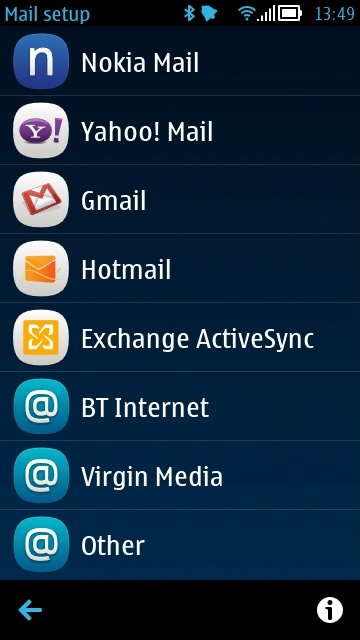
It's true that nothing good came out of Nokia's decision three years ago to work on Email separately from the rest of the Symbian OS - we still don't have proper email integration into the notification bar or into the 808's 'breathing' light, but it'll do, in terms of scope and performance, for me at least. In any case, we're stuck with it as-is - the email experience on the 808 (and on the Nokia 701, in many ways a sister device) is most definitely not a showstopper.
Text entry
I've had a lot of experience of multi-touch text entry on Android and Windows Phones, and it's true that the virtual keyboard on Symbian is lack-lustre, to say the least. First seen on the resistive-screened, stylus-driven Nokia 5800, where there was no expectation of needing to have more than one contact point on the touchscreen at a time, it's almost unthinkable that the virtual qwerty keyboard could have changed so little in three years.

The main advance has been in the introduction (in Symbian^3, in 2010) of a degree of text prediction and correction. This helps to a degree, though I remain bemused by the default of leaving the mistype in place while showing the correct spelling above and requiring the user to tap on it to accept. Thankfully the behaviour can be changed in 'Input settings' on the keyboard, but it's still a crazy default. On the iPhone, Android phones and Windows Phones, the default is always to correct and if the correction is inappropriate then the user taps to go with whatever they typed in the first place.
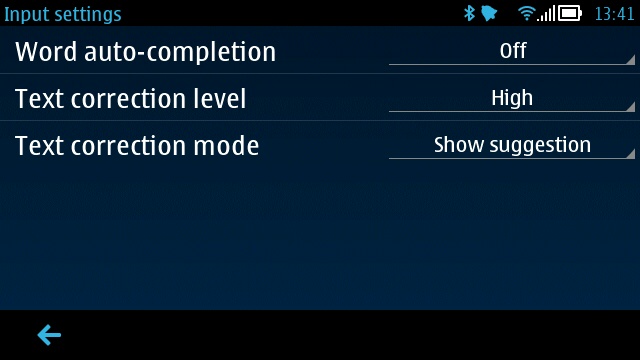
These competing smartphone keyboards also have multitouch built-in, essential when you try and type fast, since there's a good chance that one finger will still be lifting from the glass when the next one comes confidently down. With multitouch support, this is allowed for and handled - with no multitouch, you get confusion and the second tap is missed or mis-identified. Given that all modern Symbian smartphones have capacitive touch and multi-touch built into many other applications, it's a disappointing mystery why the keyboard has been neglected as it has.
About the only point in the 808's favour here is that the 4" display gives your fingers quite a bit of room to stretch out and hit virtual keys confidently, plus there's good haptic feedback for each tap. Text entry on the 808 is acceptable, but no more than that....
Web
I've commented on Web and performance before in this review series, but I did want to highlight two points. Firstly, as noted in the comments on this article, when you compare page-rendering performance in Web to that on, say, a modern iPhone and make the appropriate mathematical allowances for processor speeds, it turns out that Web's code isn't very different from Apple's Safari, which is not surprising given that both are based on the Webkit core. Of course, the processors are very different out in the real world, and I don't see Symbian suddenly gaining multi-core processor support at this late stage in its life.
I've run a few benchmarks too, for reference. Web on the 808 gains a Sunspider Javascript benchmark score of 4294ms, comparable to the Samsung Galaxy S II and quite a bit better than the iPhone 3GS - confirming that in terms of raw processor speed, the Nokia 808 is a year or so behind the Android/iOS cutting edge.
Checking html5test.com, Web scored 226 (and 9 bonus points), way ahead of Android 2.3's browser, just behind that in Android 4.0 and way ahead of Internet Explorer on Windows Phone. So pretty competitive in terms of compatibility. But then we've seen various HTML5/Javascript web sites working well on Belle FP1 should we shouldn't be too surprised.
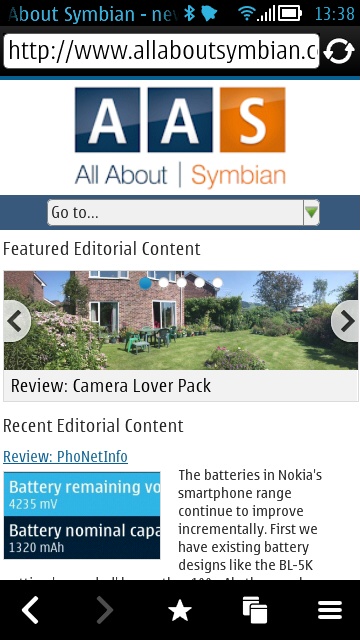

Maps
Nokia's Maps Suite comes preinstalled on the 808 and is now pretty mature and familiar. Maps is my usual starting point, but Drive is handy if I want to go quickly to somewhere I know I can find, and I use Nokia Weather almost every day to check on the forecast (allied to the Beta Labs homescreen widget).
It's easy to get blasé about Nokia Maps and to take it for granted, but it's still probably the slickest real time navigation solution for mobile, with the smoothest maps and best voices. Being able to preload entire countries raises it quite a way over the free mapping and navigation utilities on iOS and Android, and moving to those platforms is a sure fire way to start 'missing' Nokia Maps.
Which, as you might expect, works very well on the 808, with the large and clear screen even when driving in bright sunlight and with the loud speaker very audible even when driving at high speed.
Search
Symbian's global search utility works as well as ever and is, mercifully, free of lawsuits from the likes of Apple. The main utility searches all application data and file names on the phone, bringing up matches from the likes of Contacts, Music and Web bookmarks, just tap on an item to go to it in the appropriate application.
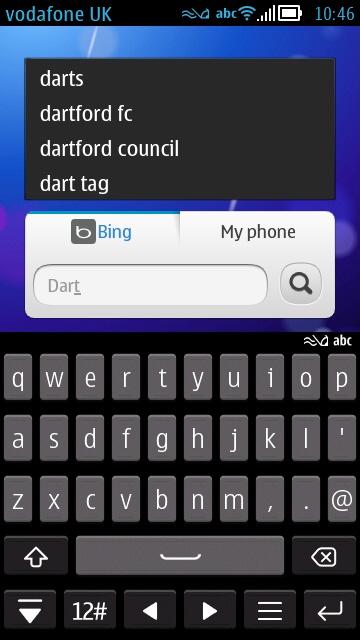

In addition, there's a homescreen widget of the same name which adds a graphical tab to go straight to searching on Bing instead. The UK retail 808s ship with no option to set Google as the default search provider, possibly a restriction imposed by Nokia's new friends at Microsoft as part of the new integration with Office, below.
Office functions
Supplied in the 808's initial firmware is the viewer-only version of Quickoffice, but the Microsoft Office Suite is virtually an enforced download from Sw_update as part of your initial round of set-up updates. As discussed here in detail (recommended reading!), this gives editing functions for Word, Excel and PowerPoint documents, though you can only create Word and Excel files on the phone itself. In addition, online document work is limited to SharePoint, whereas upgrading to the Premium version of Quickoffice gives Google Docs, DropBox, Box.net, Huddle and SugarSync integration.
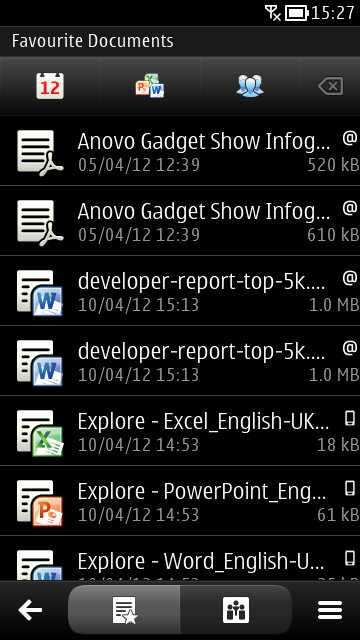
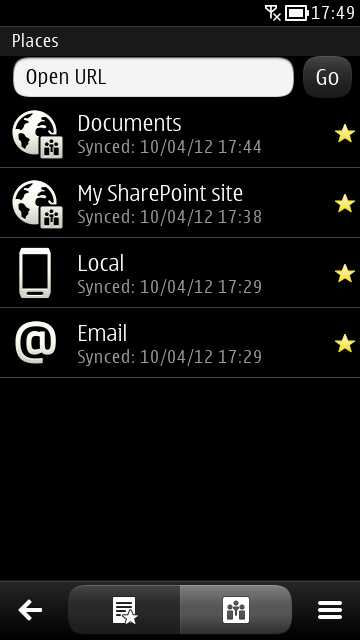
I'm still glad I installed Microsoft Office Suite, mind you, as it does upgrade the Symbian Mail client and improve Mail for Exchange reliability, which has never worked so well for me on Symbian as on this 808. But if I had to do lots of Office editing on the 808, I'd be tempted to use Quickoffice instead. It's inelegant to need both the office rivals, but they don't get in each others way too much, other than the Microsoft version taking over the default handling of emailed Office files.
Calendar
The most significant change for Belle FP1 is the availability of both the 'Calendar, next event' and 'Calendar, agenda' widgets, giving users the choice, depending on how much screen real estate could be sacrificed. The latter widget had previously only appeared on the higher resolution Nokia E6 and provides much of what most people will use Calendar for right in the widget on their homescreen: scrolling up and down a day's events, tapping through to different days and creating a new event.
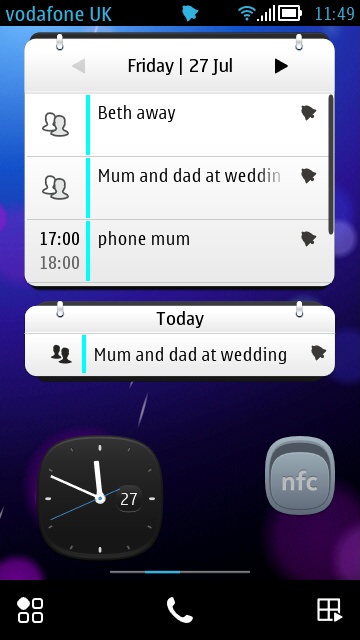

The only downside of the new version of Calendar is that there's no 'Week view'. Not an issue for me, since I never found it useful, preferring to use 'Month view' almost all the time for planning, but no doubt some users will cry foul.
Voice recorder
This somewhat humble utility is of note here because it doesn't use the Rich Recording features already mentioned in the Nokia 808. These seem restricted to the Camera/Camcorder subsystem, but the physical MEMS microphone is still excellent and with quality set to 'High', I've taken some fabulous audio recordings with the 808. Audio quality is better than similar recording on the N8, I'd say.
Store and apps
The QML-based Nokia Store for Symbian^3-onwards continues to be regularly updated. I commented in a previous review part on the idiocy of a 'Smart Installer' that's not smart at all, taking over the phone while installing an application, but this apart, the experience is now quite acceptable on Symbian Belle FP1 and having application updates highlighted and then handled in sequence while you go off and do something else is now very workable. Even if Qt-based app installs are not that quick compared to the mobile competition - applications install in seconds on Android, for example.
Much has been written about the paucity of applications available for Symbian, I've rebutted this 'myth' a few times. It's true that headline store app numbers are much lower, but the vast majority of really popular applications are available or not needed on Symbian. In some cases they're supplied by third parties, e.g. Cutebox (for Dropbox), Notekeeper (for Evernote), TwimGo (for Twitter), and so on, but apart from Kindle and Audible, I can't think of any headline iOS or Android applications which make using the Symbian-based Nokia 808 a showstopper.
Bundled games
A number of games are bundled with the Nokia 808 PureView:
- Asphalt 6 - a cut down 'demo' version, with just two free race settings and two cars available. This is a personal thing, but the 'on rails, gimmicks galore' style of the Asphalt series (reviewed here) gets a little tiresome after a while. Yes, the graphics are stunning, but I'd rather have a more realistic driving experience, I think.

- Let's Golf 2 - also cut down, with 5 trial sessions of the 'Instant play' mode. Let's Golf 2 is beautifully programmed but let down by the 'cartoon cute' graphics and gimmicks. Reviewed here.
- Block Breaker 3 Unlimited - again in demo form, with 3 trial games before you have to cough up. Reviewed here.
- Bounce Boing Battle - a specially adapted NFC version of this popular arcade game, reviewed here.
- Angry Birds Magic - a specially adapter version of the modern classic with a NFC interaction needed to unlock each set of five levels from the 'free' quote of 20.
You can't really fault Nokia for bundling a few games and they certainly do give a good impression of what the platform is capable of. Thankfully, the demos can be uninstalled at any point if you're not planning on converting them into full games.
Wi-fi 'tethering'
Included in the firmware is the free Joikuspot Light, allowing for basic (web only, no encryption) Wi-fi tethering. As with the games above, best consider this a demonstration that tethering does work and buy the full 'premium' version if you want to tether in a more serious, more secure way. Given that all other mobile platforms now have Wi-fi tethering built-in, it's something of a shame that Nokia hasn't licensed Joikuspot Premium for inclusion in each device - performance and reliability is excellent, as I found in my review.

Updates and patches
In addition to the Gallery restrictions mentioned in numerous previous review parts, which have to surely be patched with a new version of this application at some point, there are also minor stability issues. The most well-documented bug is a device freeze under somewhat uncertain circumstances - very low 3G signal has been highlighted as one trigger, some have pointed towards cut-down SIMs rather than mainstream microSIMs. All I can say is that I've only seen the issue first hand once in a month of use - the 808 shut down and wouldn't power up - I pulled and reinserted the battery and all was well, but this is certainly a confidence-damaging bug for Nokia to track down and knock on the head.
I've had several occasions when the Nokia Store or Web have crashed without warning - these are possibly related because there is some common code. Plus there was one time where the LED 'video light' got activated and stayed on, again requiring a battery-out restart.
Arriving for review with v112.020.0310 firmware in place, I haven't seen anything at all in Sw update yet, which is a little disappointing. I realise that Symbian resources may be stretched in terms of finances at Nokia, but I'd have thought that speedy bug fixes in such a flagship device would have been well within Accenture's remit.
In addition to the OS itself, some third party software titles haven't yet appeared for the Nokia 808 PureView in the Store, but this is almost always down to either the developer not getting round to adding nominal compatibility in the Store set up or to issues with Nokia Belle FP1 generally. Such titles are in the minority though and my 808 is full stocked with almost everything I could wish for.
Two high profile absentees are, at the time of writing, Skype and CoverUp. The former because Skype's gaze is elsewhere and it seems the company has not got round to submitting the appropriate version for full Belle FP1 compatibility - most 808 users are using Skype 2.1.23 (which works fine on the 808) from (e.g.) here but it would be far better to have an official Belle FP1 release. CoverUp is being worked on to address Belle FP1 issues and a new release is expected imminently.
Long term, of course, Symbian's future is terminal, looking ahead a few years. I'd expect a couple of bug fix firmware updates for the 808 over the summer and then a major release for Belle Feature Pack 2 in the Autumn, followed by a few obligatory updates throughout the following 12 months. While perhaps not as extensive an update programme as the legendary N95 and 5800 had, I doubt the 808 PureView is going to be abandoned, which is good news seeing as it's the best Symbian device to date and probably the one many of us will end up on if we stay with the platform.

The 808 in summary
Much has been written about the Nokia 808 PureView over the last month, all across the Internet, from every aspect, from Symbian fans and haters alike - I've written getting on for 20,000 words myself here on All About Symbian. After all of which, some conclusions leap off the page and about which there will be little disagreement, no matter who you talk to:
- The Nokia 808 is, undisputedly, the best camera phone ever created. Even the N8, still the second best, can only match it under very specific circumstances. And every other smartphone from every other manufacturer, is left in the dust. Most of the time, the 808's results in both still photography and video capture are staggering. The combination of PureView oversampling, PureView zoom when needed and Rich Recording mean stunning results whatever you want to record for posterity about your life.
- The Nokia 808 is, almost as undisputedly, the best Symbian smartphone ever made. Some will perhaps hang onto a QWERTY-based alternative, but in terms of specifications, build quality, display and sheer number of gadgets, the 808 takes some beating. For the many people who (contrary to the popular misconception that Symbian is 'unusable') like the OS and prefer it to the competition (perhaps) for reasons of openness, file system and maturity, the Nokia 808 is the one to save up for, to buy and to cherish.
- The Nokia 808 is something of an oddity in the smartphone landscape of 2012. For all its camera and image/video processing wizardry, for all its mature connectivity, there's no escaping that it lags behind competitors like the iPhone 4 range and the Samsung Galaxy S II and III in terms of available applications, services and (especially) entertainment options. For some observers, these factors are what makes a 'smartphone'. I'd disagree, but you can at least see why the Nokia 808 has garnered some criticism in this area.
I've said several times that every operating system has a natural life cycle - Symbian is now, arguably, 14 years old and has been through several near-death experiences already. Looked at in this fashion, it's somewhat remarkable that Symbian is still in use in a device which is still impressing people in 2012. Its core code is no doubt more than a little fragile by now, after numerous changes of form factor and interface, and the situation hasn't been helped by Nokia's decision to drastically reduce Symbian OS development over the last 18 months. It's unlikely we'll see more than the updates mentioned above and even more unlikely that we'll see another Symbian-powered smartphone.
Which means the Nokia 808, outrageous highlights and disappointing lowlights, is it. Many of us will stay using Symbian in the short term, some may even use the OS into 2013/2014 and beyond, and the installed base of Symbian owners remains huge. But if the official roster of Symbian-powered hardware had to come to an end, then what a way to go. Not with a whimper but with a rather impressive 41 megapixel bang.

Reviewed by Steve Litchfield at
No hay comentarios:
Publicar un comentario